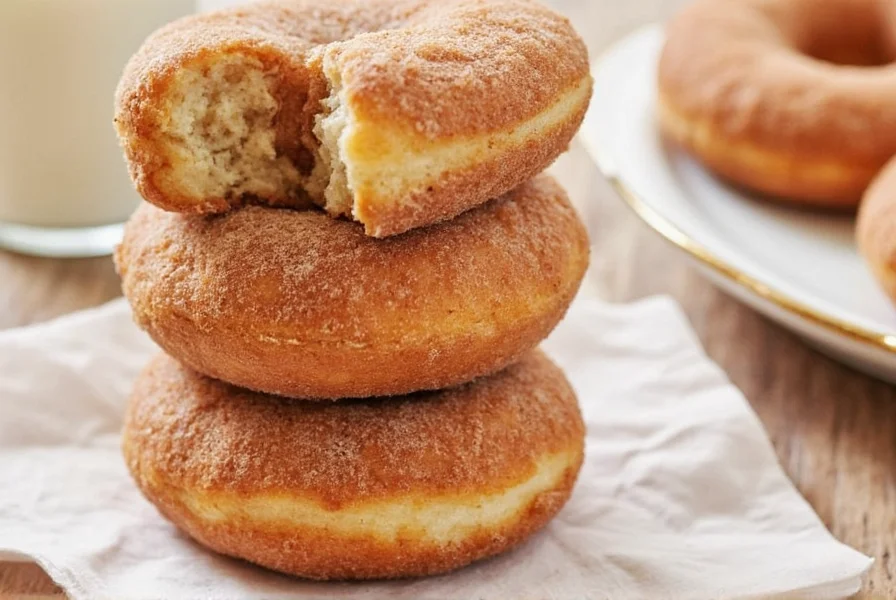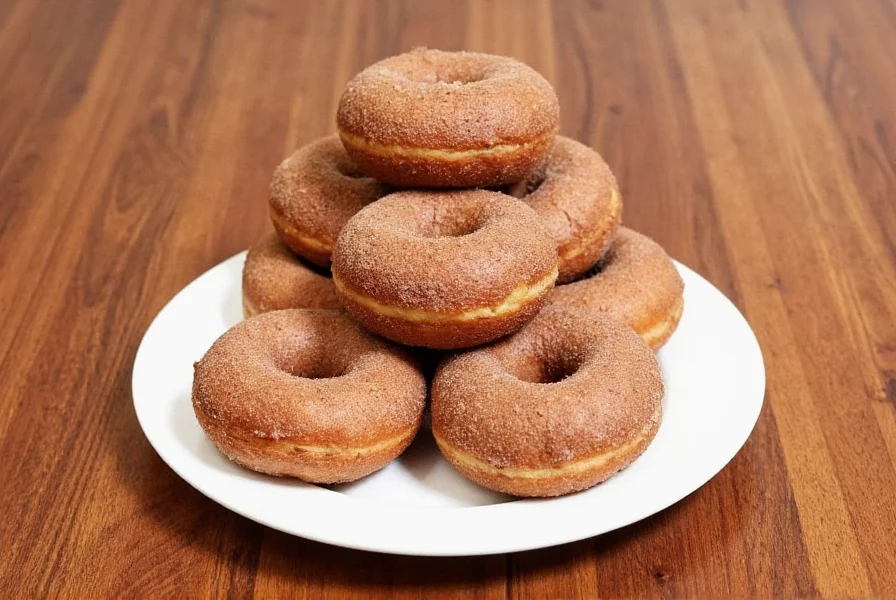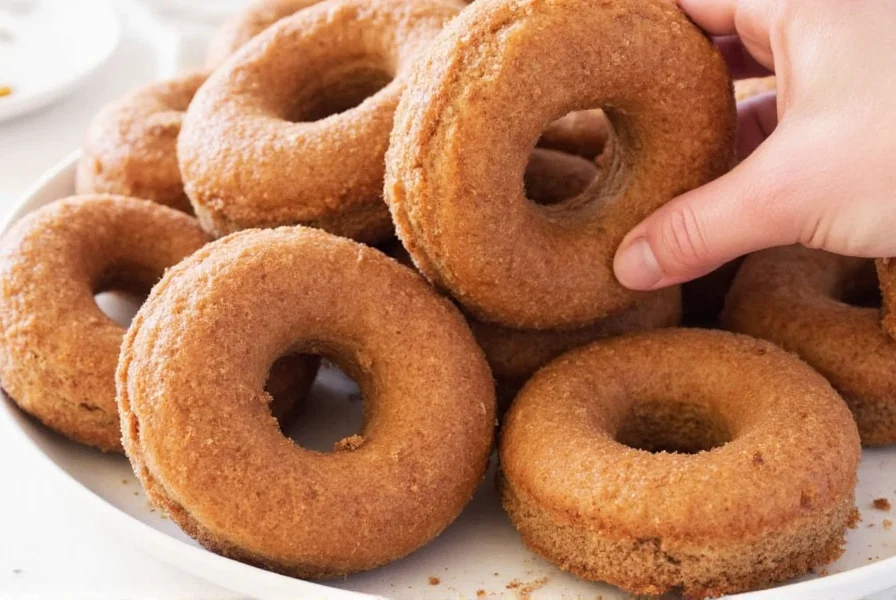The Essential Guide to Perfect Cinnamon Donuts
Nothing compares to the comforting aroma of freshly made cinnamon donuts wafting through your kitchen. These iconic treats combine pillowy-soft dough with a perfectly balanced cinnamon-sugar coating that delivers warmth and sweetness in every bite. Whether you prefer yeast-raised or cake-style varieties, mastering cinnamon donuts requires understanding both technique and ingredient chemistry.
A Brief History of Cinnamon Donuts
Cinnamon donuts trace their origins to Dutch oliebollen brought to America in the 17th century. The modern cinnamon-sugar variation gained popularity in the early 20th century as cinnamon became more widely available. Unlike glazed donuts that mask underlying flavors, cinnamon donuts showcase the delicate interplay between dough texture and spice coating—a balance that separates exceptional versions from mediocre ones.
Yeast vs. Cake: Understanding Cinnamon Donut Varieties
Two primary styles dominate the cinnamon donut landscape, each with distinct characteristics:
| Characteristic | Yeast-Raised Cinnamon Donuts | Cake-Style Cinnamon Donuts |
|---|---|---|
| Texture | Light, airy, slightly chewy | Dense, crumbly, tender |
| Rising Time | 1.5-2 hours | Immediate (chemical leavening) |
| Best Cooking Method | Fried | Fried or baked |
| Flavor Profile | Subtle yeast notes complement spice | Richer, more pronounced spice absorption |
Mastering the Perfect Cinnamon-Sugar Coating
The coating makes or breaks a cinnamon donut. Professional bakers emphasize three critical factors:
- Temperature control: Apply coating to donuts cooled just enough to handle (120-140°F) but still warm enough for sugar adhesion
- Ratio precision: The ideal cinnamon-to-sugar ratio ranges from 1:3 to 1:5 depending on cinnamon variety (Ceylon vs. Cassia)
- Application technique: Toss donuts gently in coating rather than pressing, which compresses the surface

Step-by-Step Yeast-Raised Cinnamon Donuts Recipe
Creating bakery-quality cinnamon donuts at home requires attention to detail. This professional-tested method yields 12 perfect donuts:
Ingredients
- 1 cup whole milk, warmed to 110°F
- 2 ¼ tsp active dry yeast
- ⅓ cup granulated sugar
- 1 large egg + 1 egg yolk, room temperature
- ¼ cup unsalted butter, melted
- 3 ½ cups all-purpose flour
- 1 tsp salt
- Vegetable oil for frying
- ½ cup granulated sugar + 2 tbsp ground cinnamon for coating
Method
- Activate yeast: Combine warm milk, 1 tbsp sugar, and yeast. Wait 5-10 minutes until foamy
- Mix dough: Add remaining sugar, egg, egg yolk, and butter to yeast mixture. Gradually incorporate flour and salt until smooth
- First rise: Cover and let rise in warm place for 1.5 hours or until doubled
- Shape donuts: Roll to ½-inch thickness, cut shapes, and rest 20 minutes
- Fry properly: Heat oil to 360°F. Fry 2-3 minutes per side until golden brown
- Coat immediately: While still warm (but not hot), toss in cinnamon-sugar mixture
Common Cinnamon Donut Mistakes and Solutions
Even experienced home bakers encounter these frequent issues when making cinnamon sugar donuts:
- Soggy coating: Applying sugar to donuts that are too hot causes melting. Solution: Cool donuts 2-3 minutes before coating
- Uneven browning: Oil temperature fluctuations during frying. Solution: Maintain consistent 360°F using a thermometer
- Dense texture: Overworked dough or expired yeast. Solution: Handle dough minimally and test yeast activity first
- Bland flavor: Using old cinnamon. Solution: Replace ground cinnamon every 6 months for maximum potency
Storage and Freshness Techniques
Cinnamon donuts taste best within 12 hours of preparation. For optimal freshness:
- Store in airtight container with parchment between layers
- Revive stale donuts by warming 5 minutes at 300°F
- Freeze uncoated donuts for up to 2 months, then re-fry and coat
- Avoid refrigeration which accelerates staling through starch retrogradation

Nutritional Considerations for Homemade Versions
When preparing cinnamon donuts at home, you control the ingredients. Consider these modifications for slightly healthier versions without sacrificing flavor:
- Replace 25% of flour with cake flour for lighter texture with less fat
- Use coconut oil for frying (higher smoke point, neutral flavor)
- Add 1 tsp vanilla extract to enhance perceived sweetness with less sugar
- Include a pinch of nutmeg or allspice to deepen cinnamon flavor complexity
Perfect Pairings for Cinnamon Donuts
Cinnamon donuts complement beverages with contrasting temperature and flavor profiles:
- Cold brew coffee (cuts through sweetness with smooth bitterness)
- Hot chocolate with cinnamon (creates flavor layering)
- Iced chai tea (mirrors spice notes while providing cooling contrast)
- Bourbon-spiked apple cider (enhances autumnal flavor notes)
Frequently Asked Questions
What's the ideal cinnamon to sugar ratio for donut coating?
The professional standard ratio is 1 part cinnamon to 4 parts sugar (¼ cup cinnamon to 1 cup sugar). This creates balanced flavor without overwhelming bitterness. Adjust based on cinnamon type—Ceylon cinnamon requires slightly more quantity than stronger Cassia varieties to achieve equivalent flavor impact.
Can I bake cinnamon donuts instead of frying them?
Yes, cake-style cinnamon donuts adapt well to baking. Preheat oven to 350°F, use a donut pan, and bake 10-12 minutes until golden. However, yeast-raised versions require frying for proper texture development—the Maillard reaction during frying creates complex flavors that baking cannot replicate. Baked versions will have a more muffin-like texture.
Why do my homemade cinnamon donuts taste flat compared to bakery versions?
Commercial bakeries often use dough conditioners and precise temperature control that home kitchens lack. To improve flavor depth: 1) Add 1 tsp orange zest to dough for brightness 2) Use dark brown sugar instead of white in coating for molasses notes 3) Let yeast dough rise slowly in refrigerator overnight for flavor development 4) Toast cinnamon briefly in dry pan before grinding for enhanced aroma.
How can I prevent cinnamon sugar from falling off my donuts?
The coating adhesion depends on proper timing and technique. Apply coating when donuts reach 120-140°F—too hot and sugar melts, too cool and it won't stick. For maximum adhesion: 1) Lightly brush warm donuts with melted butter before coating 2) Toss gently in coating rather than pressing 3) Use superfine sugar which adheres better 4) Let coated donuts rest 5 minutes before moving to allow setting.











 浙公网安备
33010002000092号
浙公网安备
33010002000092号 浙B2-20120091-4
浙B2-20120091-4